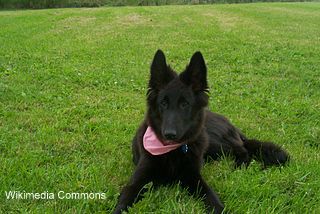
First things first
Focusing on nutrition to the exclusion of all else is not a sensible strategy. In fact, a prerequisite to good nutrition is good health. So, your first priority is to ensure that your pet’s health is being monitored and addressed as required. This will usually mean annual visits to your local veterinarian during which matters like deworming and vaccinations are taken care of, and incipient health problems are nipped in the bud.
Balanced Diet and Supplements
It is important that your pet’s food is balanced with the various nutrients required for good health. Most branded dog food have all the required nutrients. However, if your pet has home-cooked meals, you should consider adding nutritional supplements. There are a variety of labels available in the market.
However, you do need to know that supplements can pose risks. Firstly, compliance: since quantities to be added are usually tiny, it is very easy to add too much. This can cause serious problems — for example, excess calcium can be catastrophic to bone development in some breeds.
Secondly, oversight: there is limited oversight of the pet supplement industry by the FDA, so quality control is likely to be an issue.
In summary, if in doubt, do NOT add supplements; only use supplements under veterinary supervision.
Branded food
Branded food is a good choice to fatten your dog because the FDA does provide some oversight; in fact, the FDA itself suggests that commercial pet food has all the nutrients that a normal dog needs. Below is a brief description of the various classes into which branded foods fall.
Private Label
Private label foods tend to be available to local markets. In general, these tend to be low cost with poor digestibility.
Grocery brands
Grocery brands are a reasonable choice. Their focus tends to be on palatability and price.
Speciality brands
These usually provide an excellent choice. There tend to be pricier than grocery brands and private labels, but their focus on optimal nutrition and quality ingredients tend to make their product worthwhile.
Medical Brands
Finally, there are the medical brands that cater to specific illnesses like diabetes, cardiac illnesses and the like.
Stage of Life Peculiarities
You need to know that your pet’s nutritional needs can vary considerably. Her age matters; 
Puppy
The diet fed to a weaned puppy — that’s a pup that’s off Mom’s milk but not yet four months of age — is significantly different from that fed to an adult dog. This is particularly the case with some large breeds in which the wrong diet can lead to bone abnormalities. Besides the different proportion of nutrients, puppies need to be fed more as a proportion of their weight.
Youth
From four months of age until she is adult size, your dog’s requirements are morphing towards what’s required as an adult. However weight for weight, your dog will require more than what she will in adulthood.
Lactating

Working
The energy requirements of a working dog will be high and can easily be twice that of a sedentary pet; it depends on the type of activity that she’s engaged in.
Regular Monitoring of Weight

Well, there are complicated formulae that take into account weight, stage of life, occupation and pregnancy status, but we will try to keep it simple and sensible by suggesting that, in general, regular monitoring of your pet’s weight along with strict measurement of food should be the cornerstones of your plan.
You need to figure out a target weight — a good way to do this is to discuss it with your veterinarian. Then, monitor your pet’s weight on a monthly basis and adjust food quantity accordingly.

Calvin is the co-founder and one of the main contributors to dogtemperament.com. He has been an avid dog lover all his life. He enjoys researching and sharing great ideas on how you can avoid common pitfalls of dog ownership and build the most loving and enjoyable relationship with your dog.